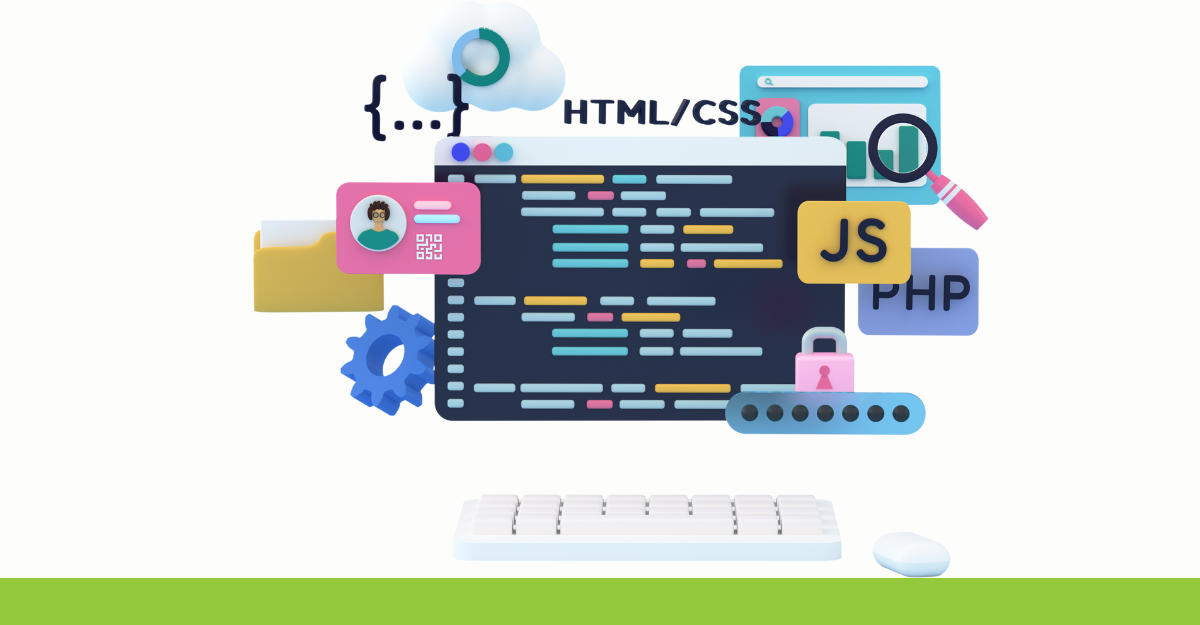Choose the Right Web Application Development Framework

Are you finding it hard to choose the right web application development framework for your business? With so many choices out there, it can be confusing. The framework you pick is important. It affects how fast you build, how well your app works, and how secure it is. One of the best frameworks is Ext JS.
In this guide, we’ll explain the basics of web application frameworks, including their uses and types. We’ll also examine the two main types: frontend and backend frameworks. You’ll learn about popular frameworks like Ext JS, Angular JS, React JS, Vue.js, and jQuery.
We’ll show you how each one can help your web app. We’ll also discuss important things to think about when picking a framework. These include how easy it is to use, how it can grow with your needs, how well it performs, how secure it is, and how fast it can develop.
Let’s get started!
What is a Web Application Development Framework?
A web app development framework helps make building websites easier. It gives developers a set of tools and guidelines to follow. This helps them create web applications quickly and efficiently.
The framework handles common tasks like:
- Routing web addresses
- Connecting to databases
- Managing user sessions
- Ensuring security.
This means developers can focus on the unique parts of their application instead of repetitive technical details.

Some popular web frameworks are Ext JS, Django, Ruby on Rails, and Laravel. Each of these works with different programming languages and offers unique features.
Using a web framework saves time and reduces the code developers must write. It also helps them build reliable websites that follow industry best practices.
Types of Web Frameworks: Frontend & Backend Web Frameworks
Web frameworks come in two main types: frontend and backend. Each has a specific role in web application development process.

Frontend Web Application Development Framework
Frontend frameworks are used to develop the part of the application that users interact with, known as the client side. These frameworks help create the user interface (UI) of a web application, which includes:
- Designing user interfaces
- Enhancing user experience
- Building reusable components
- Optimizing performance and SEO
Frontend frameworks typically use three core technologies: HTML, CSS, and JavaScript. Most modern front-end frameworks follow a component-based architecture for web browsers. The UI is divided into reusable components, each with its own structure, style, and behavior.
Popular frontend frameworks include Ext JS, React, Angular, and Vue.
Backend Web Application Development Framework
Backend frameworks are often called server-side frameworks and are used to develop the server-side logic of web applications. They provide the necessary tools and libraries to manage the background functionality of applications, including:
- Database interactions and management
- URL mapping and routing
- API creation
- Building the app’s overall architecture
- Server management
- Security features
Examples of widely used backend frameworks are Ruby on Rails, Django, Express, Spring, and ASP.NET.

What Is the Main Use of Web Application Frameworks?
A web application framework makes building web applications easier. These frameworks streamline and organize the development process by offering a variety of tools and resources for common web development tasks.
Web frameworks significantly speed up application development by reducing the complexities involved. They provide a solid foundation for web development projects with predefined settings. Depending on the framework, it can support one or multiple programming languages.
Popular Web Application Framework for Your Web Apps?
Here are some of the most popular web application development frameworks to create stunning web applications:
Ext JS
Ext JS is a great tool for creating apps that work on desktops, tablets, and smartphones. It can be used as a single-component framework for dynamic grids on static pages or as a full framework for building single-page applications. Ext JS is perfect for apps with lots of data and charts, rich user interfaces, and single-page applications.
It comes with over 140 ready-made components like grids, charts, and sliders. This helps developers easily add interactive elements to their apps. Ext JS also includes built-in themes like Classic and Neptune, which make it easy to customize and test on different devices.
The framework’s main features include classes, layouts, containers, data packages, gestures, drag-and-drop API, and event handling. These features make Ext JS a powerful tool for web development.
Ext JS is available in different versions. The Community edition is free and good for basic projects. The Pro and Enterprise editions offer more advanced features for larger projects. There is also an Unlimited edition with premium features and unlimited licenses, available upon request.

Angular JS
AngularJS was created as a side project by Miško Hevery, a Google employee who aimed to simplify web development for his internal projects.
AngularJS is designed to build dynamic single-page applications. As a client-side framework, it supports multiple platforms and uses HTML script code templates for its functions and commands.
Examples of websites built with AngularJS include:
- IBM
- Upwork
- PayPal
- Forbes

React JS
Jordan Walke, a Facebook software engineer, developed React JS and named it “FaxJs.” Initially, it was implemented on Facebook’s NewsFeed but was later adopted for Instagram and has been open-sourced since 2013.
React programming employs a declarative paradigm, making the development process both flexible and efficient. ReactJS also optimizes updating and rendering of the appropriate components when data changes occur.
Examples of websites built with React JS include:
- Netflix
- Salesforce
- Asana

Vue.Js
Evan developed Vue JavaScript to create single-page applications, utilizing an adaptable architecture that emphasizes declarative rendering.
This JavaScript framework simplifies web development requiring interactive and functional user interfaces. A notable and intriguing aspect of Vue JS is its version names, which are inspired by manga and anime, particularly from the science fiction genre.
Examples of websites built with Vue JS include:
- Behance
- Nintendo
- Wizzair
- 9gag

jQuery
jQuery is the most popular JavaScript library, utilized by over half of all major websites. Its motto is “write less, do more…!”
jQuery simplifies web development by offering numerous ‘helper’ functions. As a result, developers can write DOM quickly (Document Object Model) interactions without having to write extensive JavaScript code manually.
jQuery introduces a global variable that contains all the library’s methods. This variable is conventionally named $. Hence, access to all jQuery methods can be provided by simply typing $.

Things to Consider When Selecting a Web Development Framework
When choosing a web development framework, consider these important factors:
Ease of Use
A framework should be easy to understand and use. It should have clear documentation and helpful tutorials. This makes it easier for developers to learn and start working quickly.
Scalability
The framework should handle growth well. It needs to support both small and large projects. As your project grows, the framework should manage increased traffic and data without slowing down.
Performance
Good performance is key. The framework should run efficiently and handle high traffic smoothly. Look for benchmark tests and performance reviews to see how well it performs under stress.
Security
Security is crucial. The framework should protect against common threats like SQL injection and cross-site scripting (XSS). It should receive regular updates to fix any vulnerabilities.
Development Speed and Productivity
The framework should help you build projects quickly. Features like reusable code and pre-built modules can save time. Tools for easy debugging and fast prototyping are also beneficial.
Community and Support
A strong community is helpful. A large, active user base means more resources, such as forums and third-party plugins. Official support and regular updates from the framework’s developers are important too.
Licensing and Price
Check the cost and licensing terms. Some frameworks are free and open-source, while others might require a fee. Consider any additional costs for plugins or tools.

Wrapping Up
Choosing the right web application framework is very important. It affects how quickly you can build, how well your app works, and how safe it is. The right framework will help your project succeed.
This guide explained the basics of web frameworks. We discussed popular ones like Ext JS, AngularJS, ReactJS, Vue.js, and jQuery. Each has unique features that can help different projects.
We also discussed important things to think about when choosing a framework. The framework should be easy to learn and use. It should handle growth well, working for both small and large projects. Good performance is key, so the framework should run smoothly and handle high traffic. Security features are crucial to protect your app.
The framework should help you build projects quickly with reusable code and pre-built modules. A strong, active community offers valuable resources and support. Finally, check the cost and licensing to ensure it fits your budget.
Also Read: 8 Must-Know Tips for Choosing the Right Web Application Framework for Your Project
FAQs
Why Is It Important to Choose the Right Framework for an Enterprise?
Choosing the right framework ensures efficient, secure, and scalable web applications for your enterprise.
How Do I Evaluate the Scalability of a Framework?
Evaluate scalability by testing the framework’s performance under increasing loads and expanding project requirements.
Where Can I Find More Information on Web Application Frameworks?
You can find more information on web application frameworks in Sencha’s blogs, resources, and official documentation.
What is the Best Web Application Development Framework?
Ext JS is one of the web application development frameworks for front-end developers.
Sign up for free at Sencha to try Ext JS to build amazing web applications.

The Sencha team is excited to announce the latest Sencha Rapid Ext JS 1.1.1 release…

React is perhaps the most widely used web app-building framework right now. Many developers also…

React’s everywhere. If you’ve built a web app lately, chances are you’ve already used it.…










